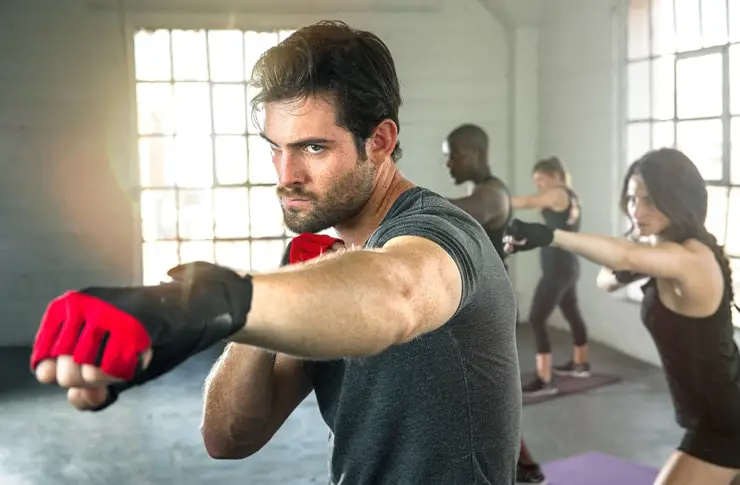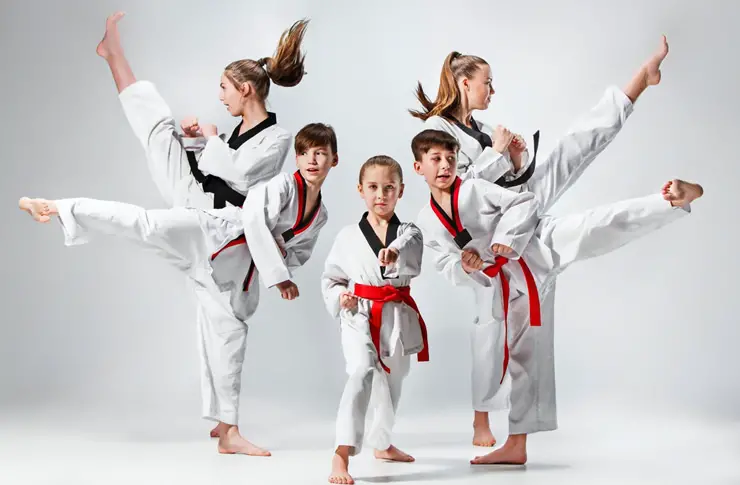
Many martial art styles have started to grow and evolve throughout history, and they are taking on many different forms and practices. However, still to this day, one thing remains the same: martial arts is about self-defense.
Although many people may go into the practice to learn how to ‘beat someone up’, that’s not its intended purpose. Martial arts teaches someone how to defend themselves if they are ever under attack. It also teaches you not to be the aggressor. The best way to win a fight is to never be in one.
However, if you find yourself in a situation where you need to keep yourself and others safe, martial arts will teach you everything you need to know.
There are two categories in which you can learn these techniques hard style and soft style of martial arts.
What Is the Difference Between the Hard Style and Soft Style of Martial Arts?
Both forms of martial arts are very effective when it comes to self-defence. You will learn how to stay out of the way of your attacker’s blows and possibly even save your own life.
So, what are hard and soft styles of martial arts, what are the differences in technique, and how do they differ?
Hard Style of Martial Arts (Linear Movements)
For hundreds of years, Martial Arts have been used to train and prepare warriors, soldiers, and even our police force to go into battle and know how to stop an opponent’s blows before they even make their move.
In hard styles of martial arts, you avoid the blow by blocking and countering an opponent’s strike. You meet their forceful blows with your own.
To get a better idea, think karate, boxing, and taekwondo. Each of these forms of fighting requires a block to stop a blow from coming. Then there is a counterblow to stop the attacker from continuing the fight.
Hard style martial arts are known for their more violent form of combat. When you are kicking low at a person’s legs, you are attempting to break them. When you are grabbing at and twisting an attacker’s arm, your goal is to break their arm.
When we think of hard-style techniques we think of defense and combat hardcore fighting to take out your attacker.
Kyokushin
Kyokushin fighting is a style of fighting that translates to the “ultimate truth.” This is a major indication just in the name of how extreme this form of Martial Arts truly is. It is a hard contact form of stand-up fighting that was founded in 1964 in Japan.
The reason this style of fighting was created was to promote self-improvement, teach discipline, and encourage hard training.
Kyokushin is a mix of multiple original art forms including, enshin, Kudo, subak, bogutsuki karate, and Tae Kyon. (Actor Sean Connery has his black belt in Kyokushin Karate)
Muay Thai

Muay Thai is an aggressive form of Martial arts additionally known as Thai kickboxing and has been called the art of eight limbs. It is because of the extensive use of your elbows, fists, knees, and shins. It is a stand-up form of Martial Arts that focuses on strikes (hardstyle)
Soft Style of Martial Arts (Circle Movements)
When you are trying to picture a soft technique of martial arts, think of aikido or wresting. It involves moving your body away from the blow and positioning yourself to subdue the attacker before they can strike again.
Instead of going into the fight with the intent of hurting your opponent or knocking them out, you are simply trying to subdue them or keep them from being able to attack any further. When you reference wresting, you do not think of kicking or punching but taking control. That is what soft style martial arts is all about.
When you think of soft styles of martial arts, think of defense. You are trying to stay out of the way of your opponent, not necessarily trying to take them down. You are in an altercation trying to keep yourself safe without hurting the person coming after you.
Aikido
Aikido is a Japanese form of martial arts created to protect oneself while also refraining from causing harm to your enemy. The techniques involved in this art incorporate breathing control, triangular principles, and redirecting your opponent’s momentum during an attack. Aikido’s focuses are softness and grappling.
Judo
Judo is a Japanese form of art and translates to “gentle way” and was created in 1882. The main principles around the Judo practice are to be gentle with your movements and use your opponent’s force against himself to avoid an attack.
As a sport, to win your match in Judo, you must subdue your attack with a clean throw or by using your body weight and pinning them to the floor.
Hard Styles VS Soft Styles
When trying to decide which form of martial arts is right for you, you must understand which each style is. Although “soft style” may sound like its less action or even less of a workout for that matter, it is just as effective of practice as hard styles.
The movements used in judo, ju-Jitsu, and aikido can be just as effective as those in MMA, kravmaga, or kickboxing.
The difference is all about the results and what you believe is the right way to defend yourself and others. Many forms of Martial Arts were designed by mixing cultural beliefs, religious beliefs, and self-defence techniques.
The Truth About Hard and Soft Style Martial Arts

The truth is, there are very few practices out there these days that are 100% hard or soft styles of martial arts. Most styles of martial arts are a mixture of the two, like “the grey areas’” This means that although karate is a “hardstyle”, the training teaches about not fighting to cause damage per se but only to stop the attacker from….well, attacking.
Conversely, some martial arts styles originally designed to injure, or even kill an opponent have softened up to make it more universal. By allowing participants or students to learn them and practice them as a sport and in competition.
By incorporating multiple forms of martial arts and combining their techniques to create a new form of fighting, has become a common thing globally. Once a style of martial arts forms, it spreads throughout countries and gets picked up in different communities, who will, in turn, take those teachings and combine them with others to make it their own.
This chain of events will continue until the next time a newer combination emerges. This pattern will continue as long as martial arts are practiced.
No form of martial arts is better. They are all just different and appeal to the beliefs and values the practitioners believe in.
Conclusion
The purpose for engaging in martial arts is not to prepare yourself in the event you get into a fight. Learning martial arts is designed to enable you to fight back so that you can get out of a fight.
The goal is not to kill or harm another human being, but to be able to defend yourself.
The practitioner’s intent for finishing the fight is the biggest difference between hard and soft styles. If you want not only to subdue but injure your opponent, you are going to practice hard forms of martial arts.
If you want to avoid physical violence and cause as little harm to your attacker as possible, you will want to practice softer forms of Martial Arts. However, if you are like most practitioners today, there is a good chance you want to meet somewhere in between the two, blending hard and soft styles of Martial arts together.
